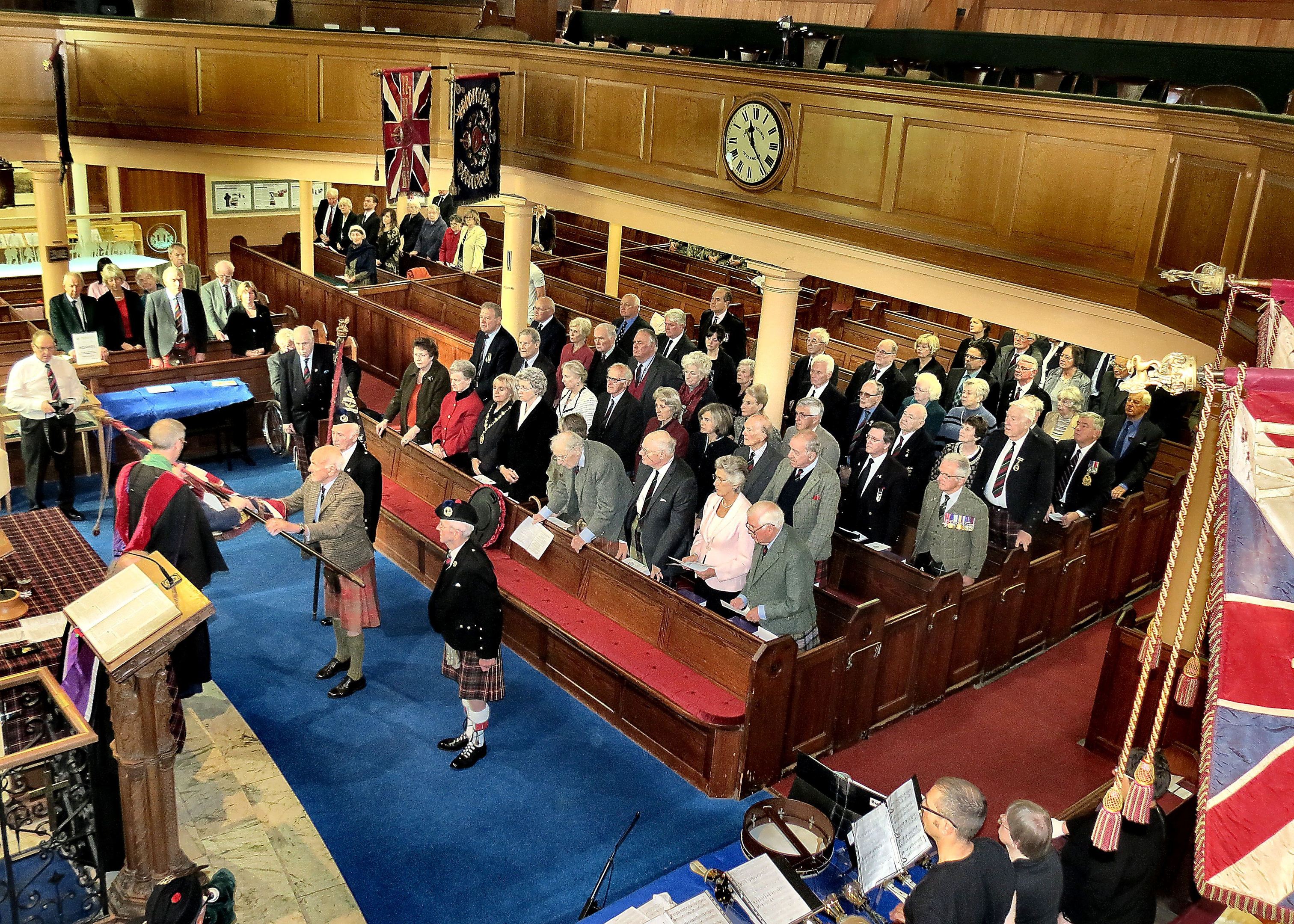A poignant ceremony has been held in Inverness to mark the centenary of the Battle of Loos and the losses of the Queen’s Own Cameron Highlanders.
More than 800 local soldiers were killed in the bloody battle during World War I.
Dozens of people were at yesterday’s ceremony, which was also attended by 95-year-old Lieutenant Colonel Charles Cameron – the last surviving son of late Cameron clan chief Colonel Donald of Lochiel, who raised and leg the regiment’s 5th battalion at Loos.
The regiment’s colours, which were originally presented by King Edward VII in 1909, were handed over to Old High Church during the ceremony.
They joined the four stands of colours of other battalions of the Cameron Highlands which are already on display in the church.
They were given to Rev Peter Nimmo, who led the service, by Lt Col Cameron.
Lord Lieutenant of Inverness-shire, the present Donald Cameron of Lochiel, and grandson of the Loos veteran, read the Gospel message.
The battle, in which five battalions of the regiment took part, along with over 40 other Scottish battalions, was the largest of 1915 on the Western Front and an attempt to break the stalemate of trench warfare.
After three weeks of bitter fighting the offensive failed, due – according to contemporary commentators – to a lack of artillery support, ammunition and infantry reserves.
Only the Black Watch suffered greater losses than the Camerons.
Loos was the first large engagement in which the volunteer New Army took part, and cost Britain and the Commonwealth over 20,000 killed and nearly 40,000 wounded, more than double the casualties of the opposing Germans.
